Begonia is a large and diverse group. There are more than 1,000 species of begonias. Begonias are prized for their texture, multicolored foliage, and colorful flowers.
Most houseplant begonias are fibrous-rooted or rhizomatous, but there are some tuberous varieties.
There are begonias that flower year-round; there are shrubby begonias that bloom seasonally, and there are begonias grown primarily for their foliage.
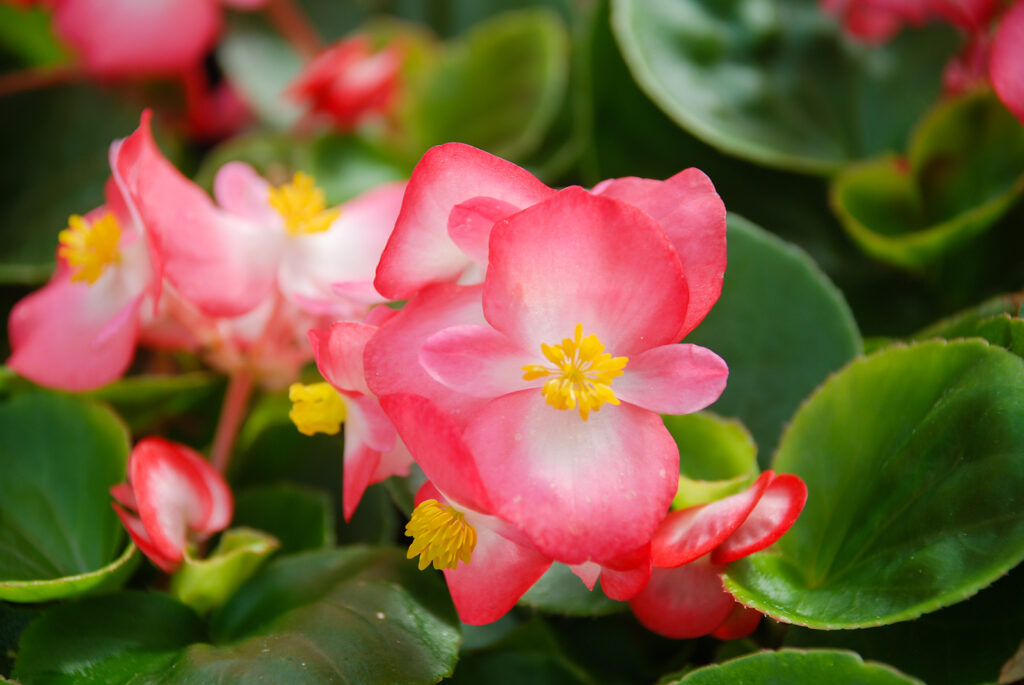
Begonia growing requirements
- Begonias thrive in standard indoor potting soil especially if you add a bit of extra peat moss to increase acidity.
- Begonias want soil that is evenly moist, not wet, and not dry. If water collects in the saucer below the pots, empty it immediately.
- Begonias grow best in temperatures between 65° and 75°F (18°-24°C). Keep the air around begonias slightly humid; set pots on a humidity tray.
- Begonias want bright filtered light. They can take morning direct sun, but not mid-day or afternoon sun. All do well under artificial light, needing 14-light hours daily.
- Feed begonias regularly with liquid all-purpose indoor plant food.
- Allow air to circulate around begonias; this will help prevent mildew and gray mold, two diseases begonias are susceptible to.
- Repot when roots occupy ½ of pot space.
- Pinch stems to encourage bushier plants.
- Remove faded blossoms and withered foliage immediately.
- Begonias can be propagated by seed, division, or leaf cuttings.
Favorite Begonia types
There are hundreds of begonia species and varieties. The American Begonia Society groups begonias according to their growth habit; growth habit often determines care requirements.
Here are some of the most popular begonia types:
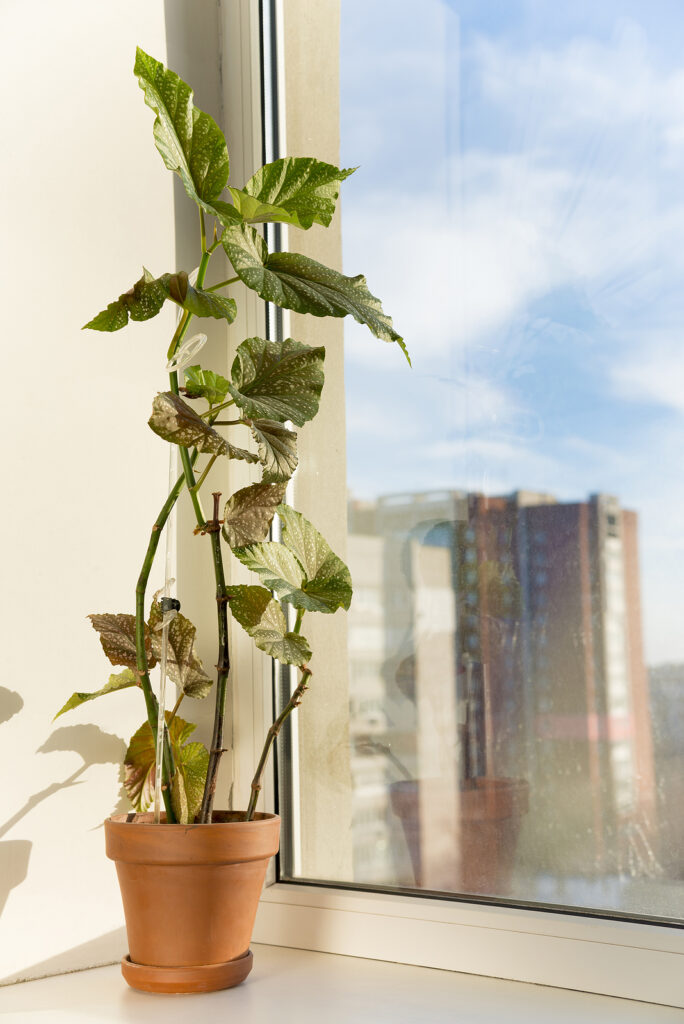
Cane-type Begonias
These begonias owe their name to their stems which grow tall and woody; the stems have prominent bamboo-like joints.
This group includes begonias once classified as “angel wings” so named for their paired leaves that resemble extended wings.
- Cane-type begonias grow erect on multiple stems and can grow to 5 feet (1.5m) tall
- Cane-type begonias bloom profusely—clusters of white, pink, orange, or red flowers. Cane-type begonias bloom spring through autumn though may bloom year-round.
- Prune old canes that have no leaves down to two leaf joints in early spring to stimulate new growth.
Begonia ‘Irene Ness’ has large dark green leaves with drooping clusters of fragrant coral pink flowers; blooms from mid-spring to mid-winter.
Begonia ‘Lucerna’ is a tall, easy-to-grow plant; it produces rose-red flowers in spring and summer. Leaves are silver-spotted on top and reddish undersides. ‘Lucerna’ prefers strong light. After flowering, prune the plant back.
Begonia ‘Sophie Cecile’ has large, deeply cut, glossy green leaves splashed with silver. This plant bears profuse clusters of rose-pink flowers in spring and summer.
Begonia ‘Orange Rubra’ grows to 4 feet (1.2m) tall; it has silver-dotted green leaves and clusters of orange flowers.
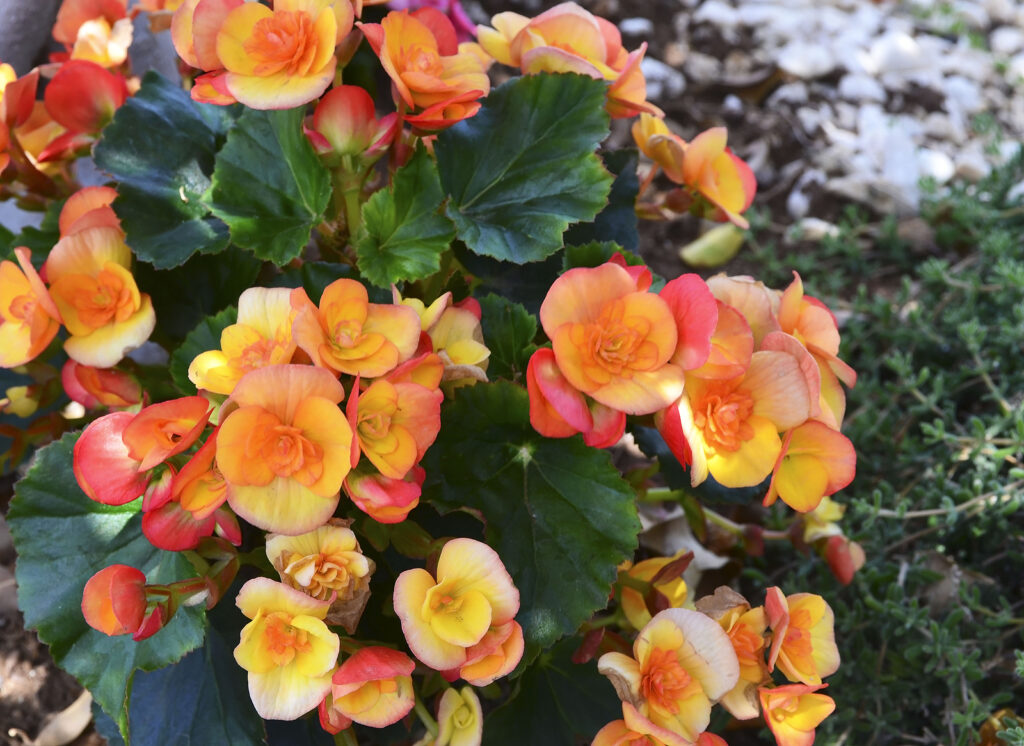
Hiemalis Begonia, also called Rieger Begonia
Hiemalis begonias are also known as “Rieger” or “Elatior Rieger” begonias.
- Flowers are about 2 inches (5cm) across; they appear spring through winter. Flowers can nearly hide the foliage when the plant is in bloom.
- Plants need indirect light in summer; avoid direct sunlight. Plants can tolerate direct light in winter.
- Water to soak the soil; allow the top inch of soil to dry out between waterings. Do not wet leaves as the plant is susceptible to mildew.
- Cut rangy stems back to 4-inch (10cm) stubs.

Rex Begonias
Begonia rex-cultorum, often called rex begonia, has bold, multicolored leaves. It is the most striking of all foliage begonias. The leaves are shaped like elephant’s ears and may be smooth or textured. Rex begonias are rhizomatous.
- Leaves grow from rhizomes.
- Plants grow to 18 inches (46cm) in length.
- Plants require high humidity, about 50 to 60 percent. Place the pot on a humidity tray or mist the plant frequently.
Begonia rex-cultorum ‘Helen Teupel’ has bronze-red and silver-green leaves; foliage is showier than the pink flowers.
Begonia rex-cultorum ‘Merry Christmas’ has green and rose red leaves with silver highlights. It can be finicky about water and humidity.
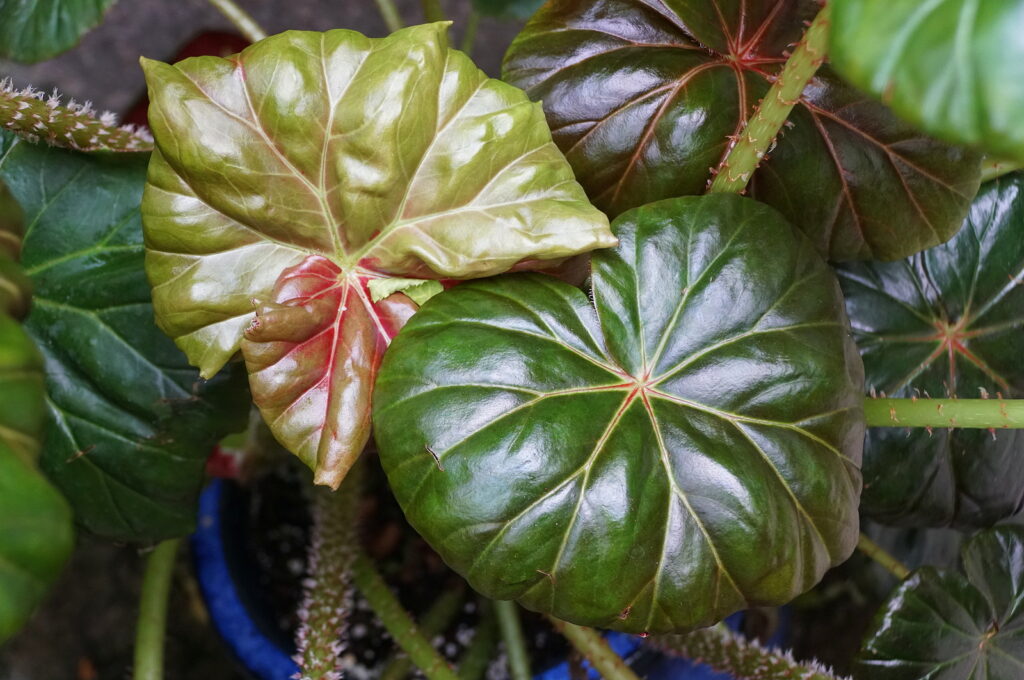
Rhizomatous Begonias
These plants are grown from rhizomes. They are noted for their beautiful foliage. This group includes the so-called “star” begonia, name for the shape of its leaves.
- Plant in wide, shallow pots; plants are shallow-rooted.
- Water only when the top inch (2.4cm) of soil is dry.
- Flowers bloom winter through summer. Flowers appear on erect stems above the foliage.
- Rhizomes can grow over the edge of the pot. Rhizomes can be cut back.
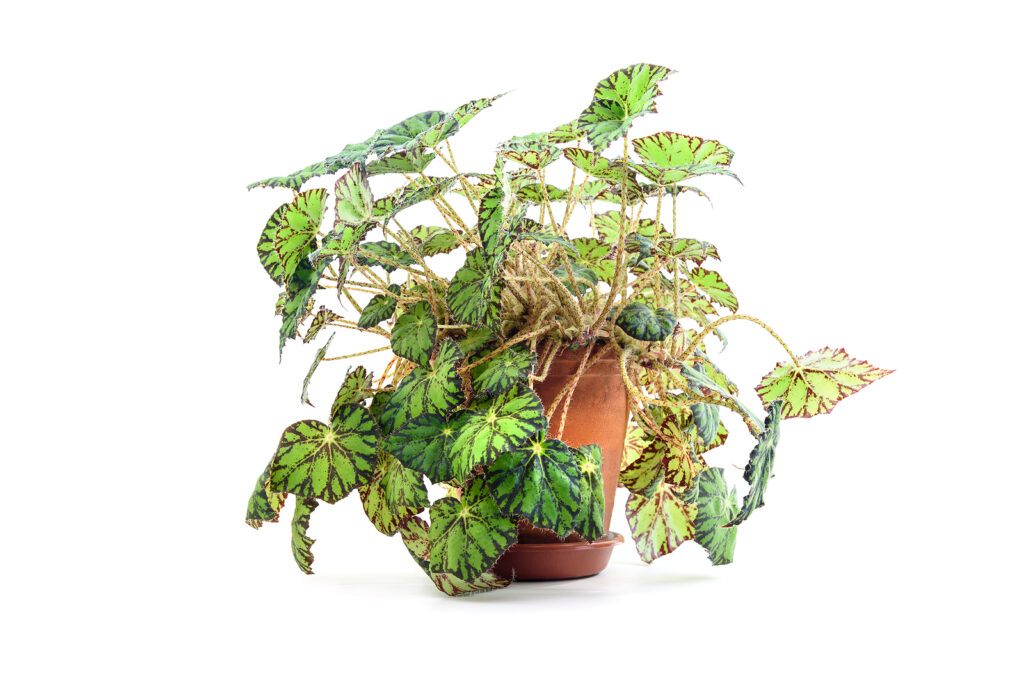
Begonia bowerae has small, deep green leaves with black edging; shell pink flowers bloom from mid-winter to early spring.
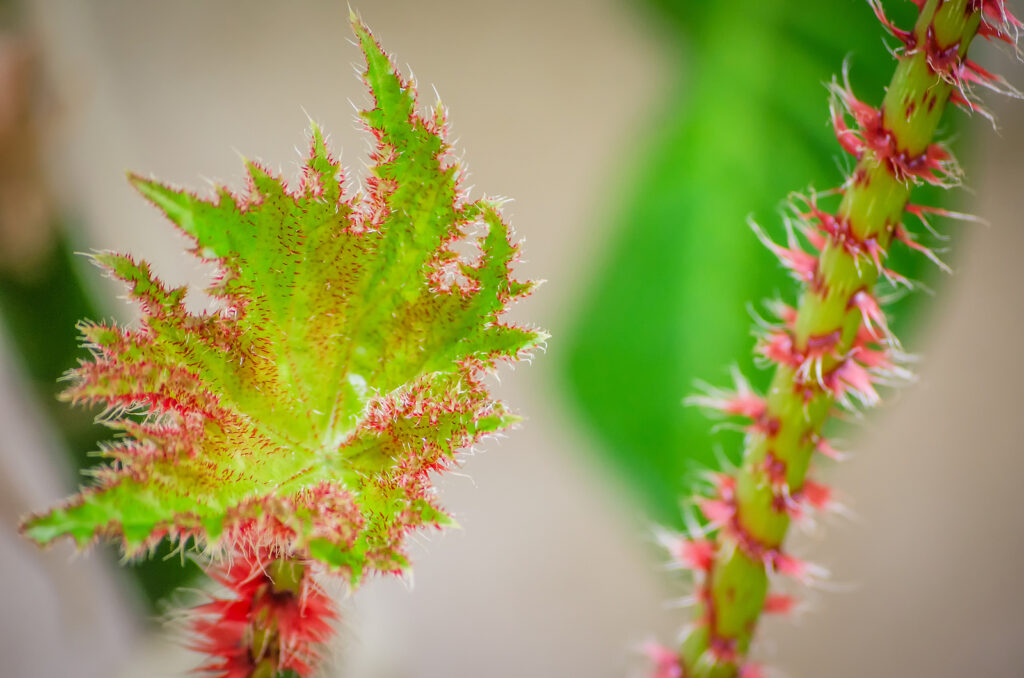
Begonia ‘Cleopatra’ is an easy to grow “star begonia.” Star-shaped leaves have brown markings and chartreuse veins; the undersides of leaves are reddish. Pink flowers bloom from winter through early spring.
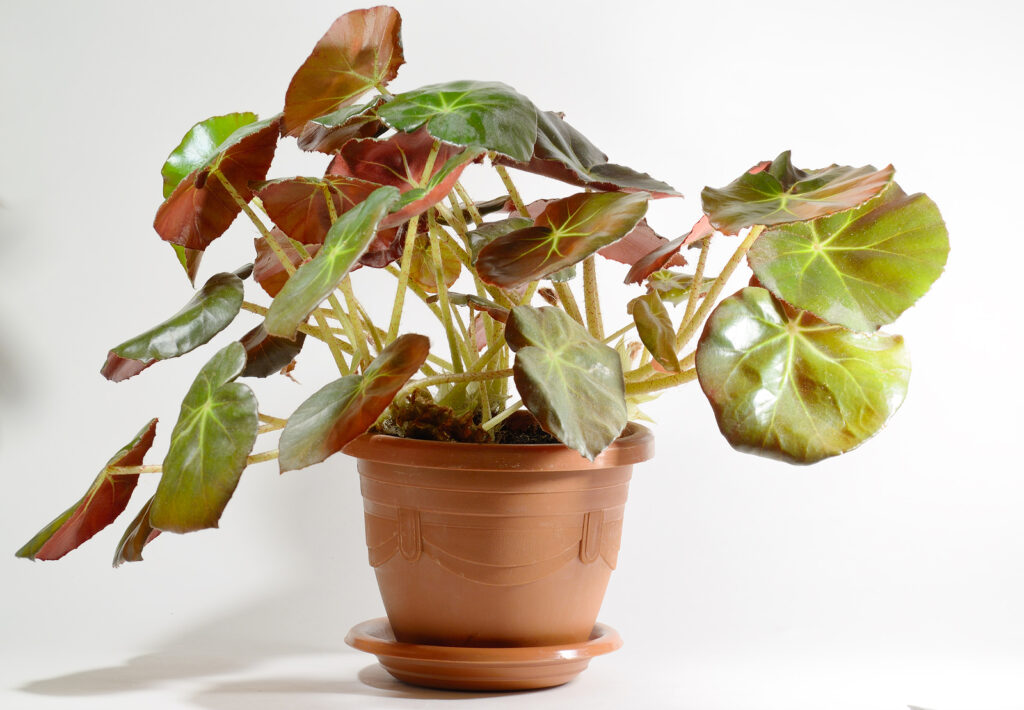
Begonia erythrophylla, often called beefsteak begonia; has roundish leaves, dark green on top, and deep red on the underside; clustered flowers are pink. B.e. ‘Helix’ has spiraled leaves. B.e. ‘Bunchii’ has lettuce-like frills and ruffles on leaf edges.
Begonia ‘Freddie’ has large copper-green leaves that are red on the underside; it has tall sprays of pink flower year-round.
Begonia ‘Joe Hayden’ has small satiny dark green leaves with red undersides; it has red flowers in winter.
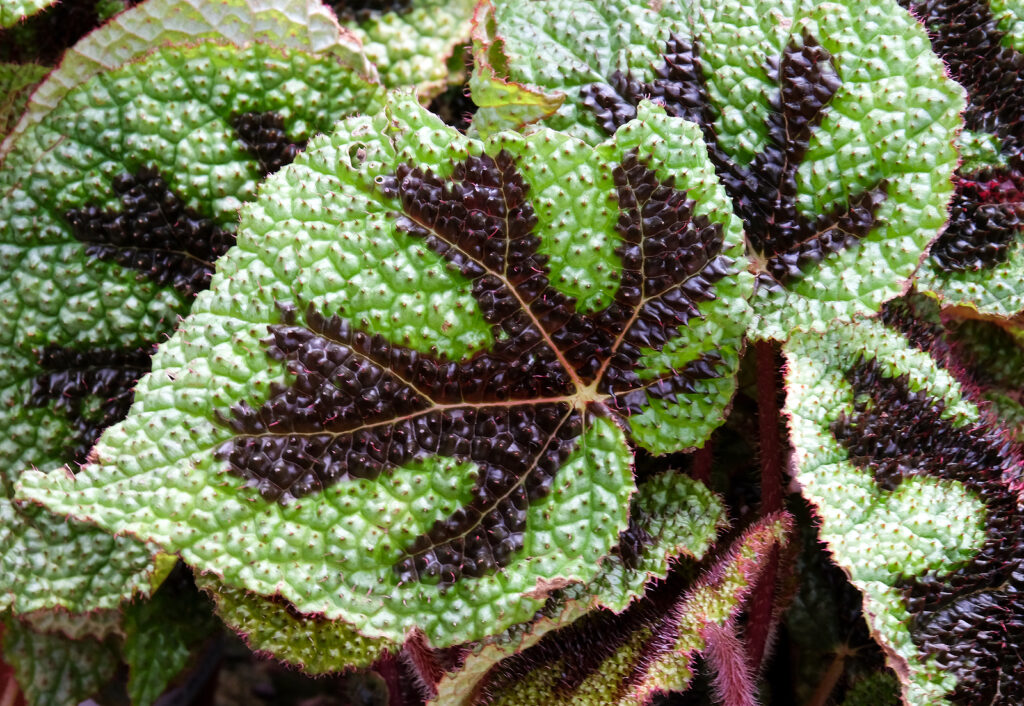
Begonia masoniana, commonly called, iron cross begonia due to the pattern on its leaves. It has large puckered and yellow-green leaves; a chocolate pattern on the leaves resembles a Maltese cross. Waxy white flowers appear in spring. This plant can be difficult to grow.
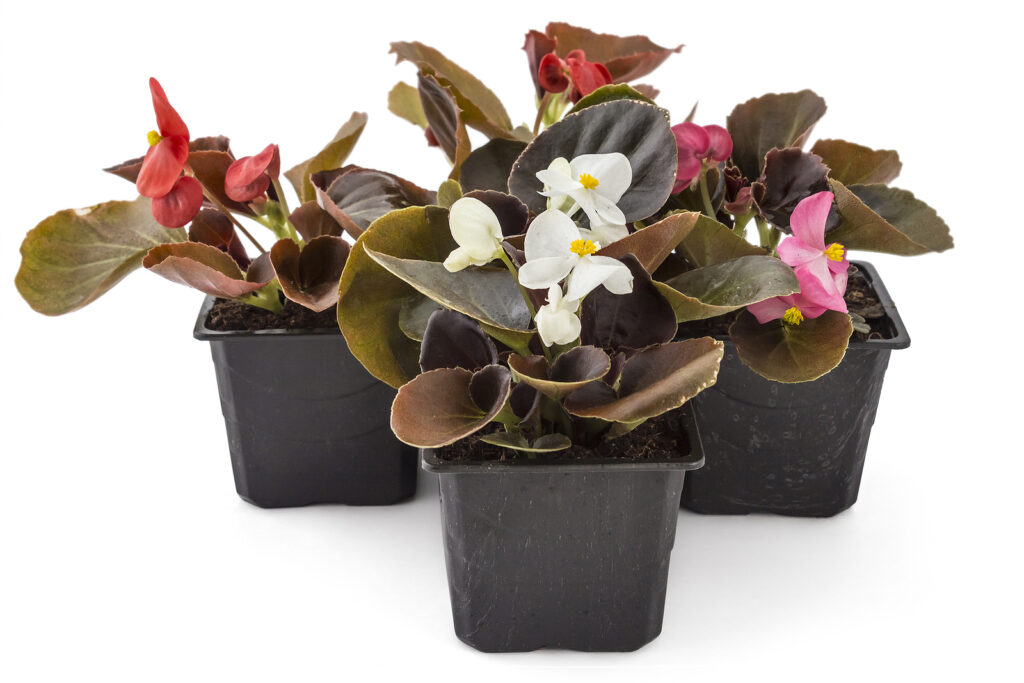
Semperflorens Begonias
This type is also known as bedding or wax begonias. Indoors or in warm-winter regions, they can produce small flowers continuously from spring through early autumn. Flowers are shades of red, pink, and white. Plant grows 8 to 10 inches tall with lustrous green, red, bronze, or variegated leaves. These plants are fibrous-rooted.
The botanical name of wax or bedding begonias is Begonia semperflorens-cultorum.
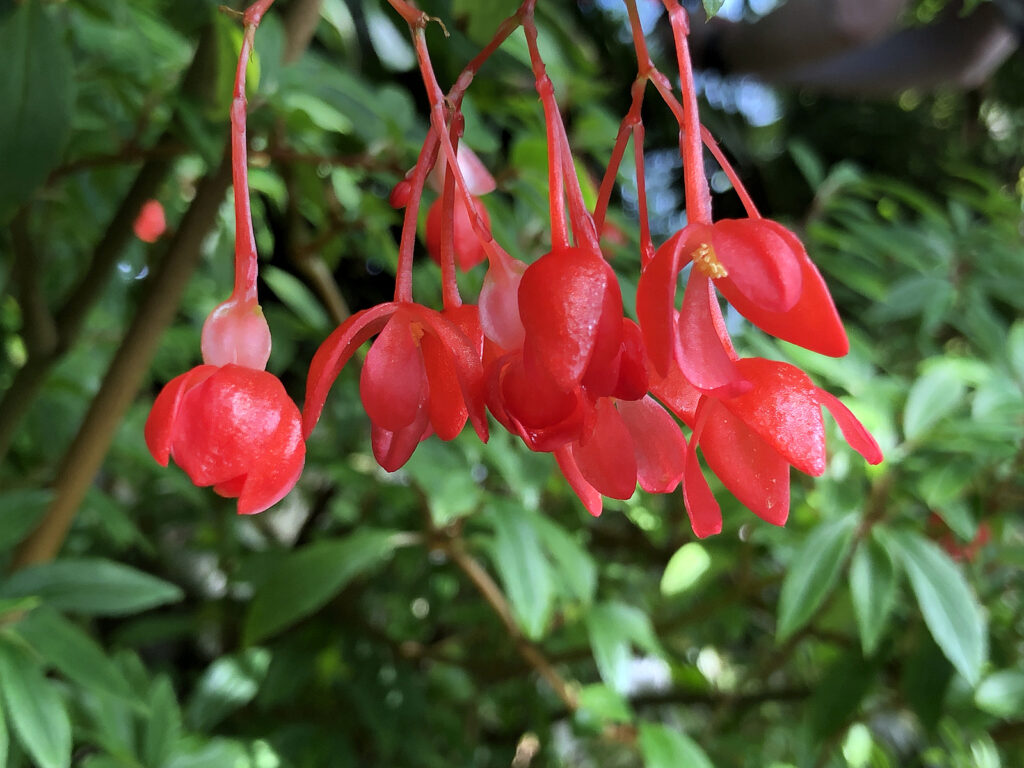
Shrublike Begonias
The is a large group of outdoor growing begonias. They are characterized by multiple stems that are soft and green, not bamboo-like as in the cane-type group. Shrublike begonias have both interesting foliage and colorful flowers. Some shrublike begonias have soft feltlike hairs covering the stems and leaves
Many shrublike begonias grow upright and bushy, others are trailing and suitable for hanging baskets. Flowers appear in shades of pink, red, white, and peach. These plants can bloom at any time of the year.
Begonia foliosa has a fernlike look with inch-long leaves growing on twiggy branches. Stems can arch or droop to 3 feet (.9m) long. Flowers are small, white to red in color.
Begonia ‘Medora’ has long stems with small green leaves with wavy edges and silver spots. Pink flowers appear from spring through autumn.
Begonia ‘Richmondensis’ grow to 2 feet tall. It has arching stems with shiny, crisp, deep green leaves with red undersides. Flowers are salmon pink.
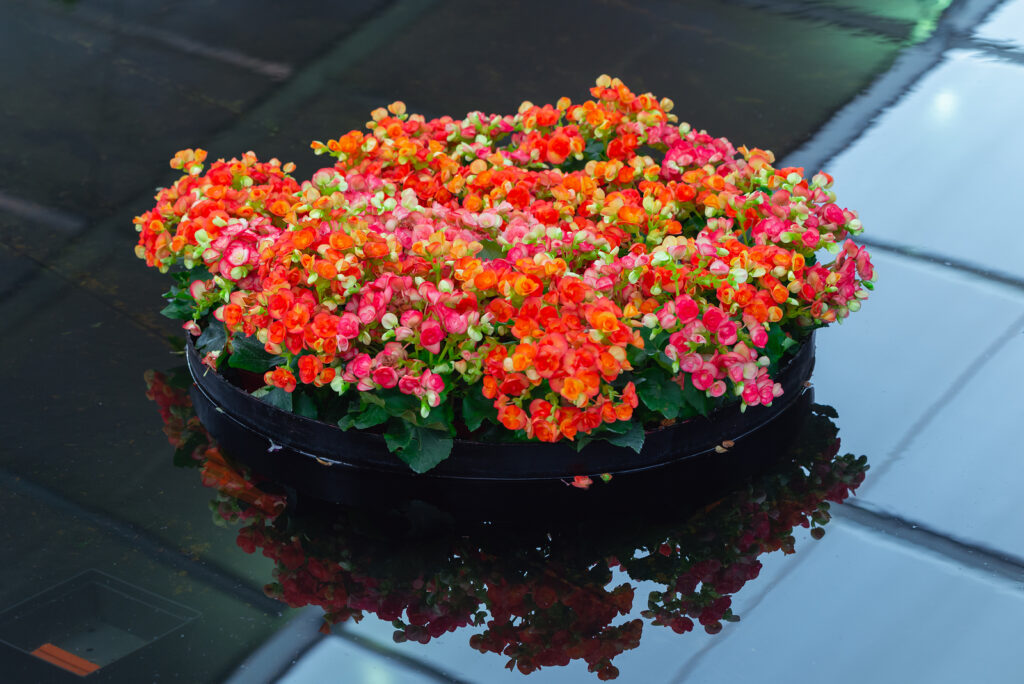
Trailing or climbing Begonias
This group of begonias can trail or be trained upright.
Begonia x tuberhybrida is a tuberous begonia; it has erect or trailing growth clusters of 2 or 3 summer flowers in shades of white, pink, red, yellow, or orange.
Begonia ‘Ellen Dee’ has green leaves and orange flowers.
Begonia solananthera has glossy light green leaves and fragrant flowers with red centers.
Also of interest:















